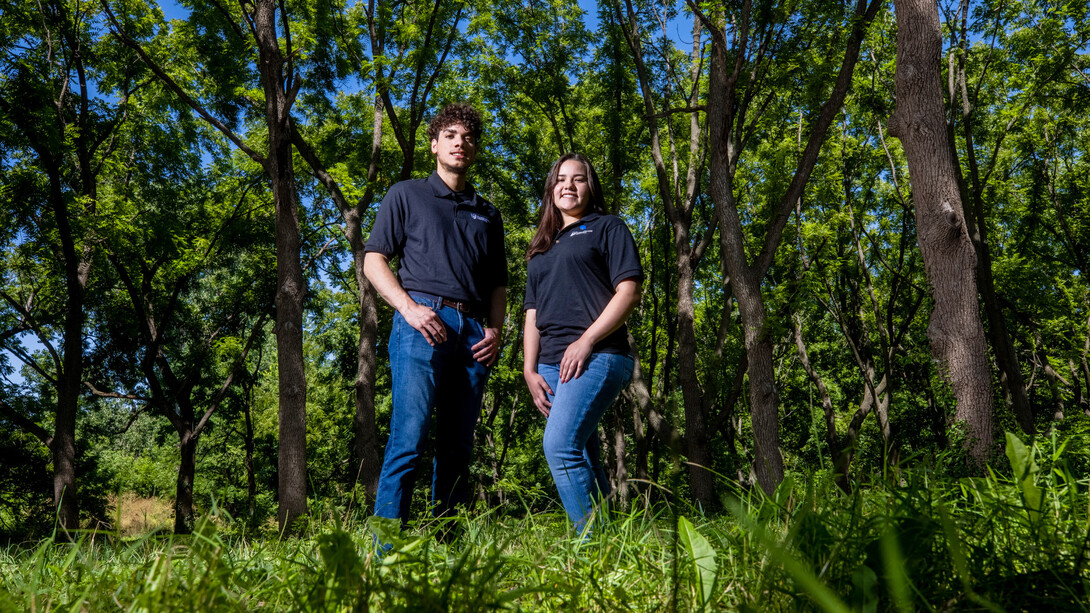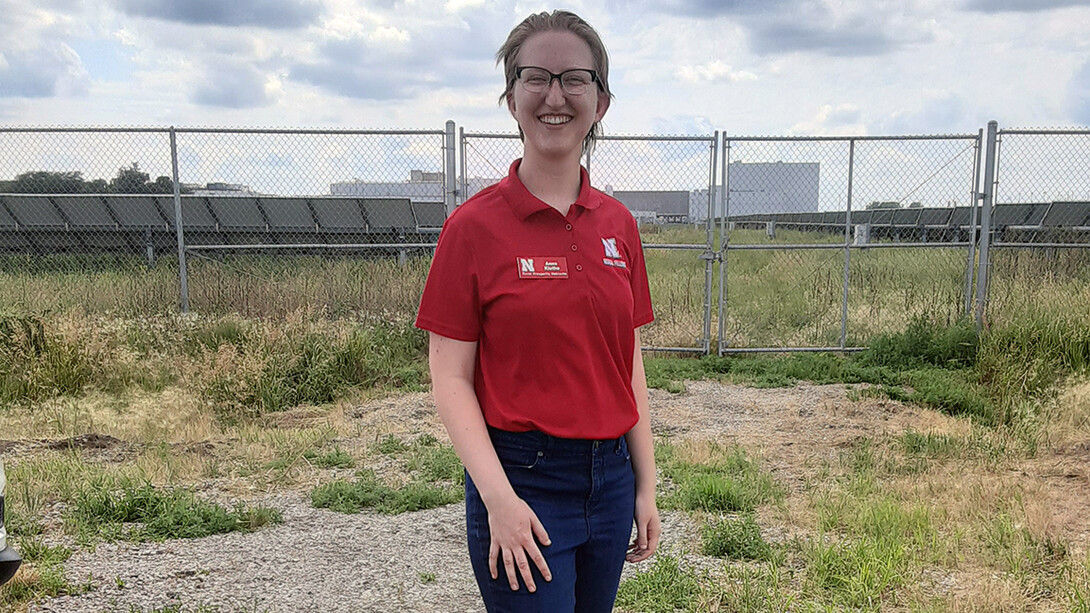
A trio of Huskers are working directly with Nebraska communities to develop energy-saving projects.
The University of Nebraska–Lincoln students, each a senior environmental studies major, are summer interns with Project Energy Nebraska, an ongoing, collaborative project that works with Nebraska communities to save energy and money. Their work is focused on Norfolk, South Sioux City and Lincoln, with projects directed at electric buses, veterans housing and carbon sequestration.
“In essence, our goal in the project is to help the local communities reduce their energy usage as well as reducing greenhouse gas emissions,” said Dave Gosselin, director of Project Energy Nebraska and the university’s environmental studies program.
Through this internship, students are learning project management and using ClearPath to assist the cities with their needs, such as energy and greenhouse gas inventories.
“I’ve gained a lot of experience in project development,” said intern Awinita Brunner. “I feel like in the past with courses or other projects the focus is on execution and you already have all the steps laid out for you. With this internship, you’re creating the whole project itself so I’ve learned about all the processes that go into building all of this.”

In Norfolk, the students are working with the city and North Fork Area Transit to help implement “Complete Streets,” a more holistic approach to transportation. The Complete Streets approach plans, designs, builds, operates and maintains streets to provide safe access for all, including pedestrians, bicyclists, motorists and transit riders of all ages and abilities. For this project, students are helping the city calculate the potential energy and cost savings for replacing diesel buses with compressed natural gas models and examining the impact of providing public transit rides to employees of businesses in Madison.
In South Sioux City, the students are conducting an initial energy use and greenhouse gas emission inventory. They are helping the city forecast how two projects would help save energy and reduce emissions in the environment. The work includes a veterans housing project that is using renewable energy during the building process, as well as for the power supply. They are also examining improved efficiency in residential and commercial buildings.
In Lincoln, the students are primarily looking at the city’s ongoing efforts to remove carbon from the atmosphere through natural processes, which is known as carbon sequestration.
The initiative is examining opportunities to use carbon taken in by new trees and biochar as modes of natural carbon sequestration. Biochar will be produced by the city from the thousands of ash trees that will be removed due to emerald ash borer. The biochar process results in the tree material being reduced to a fluffy carbon substance that can be incorporated into the soil. This improves soil health, removes carbon and increases the ability for water to infiltrate into the soil.
The students are investigating opportunities to sell carbon credits generated by the biochar incorporation into the city-owned farmland.
Project Energy Nebraska began in spring 2021 as part of a 300-level Environmental Studies course, Environmental Engagement and the Community.
The inaugural class laid the foundation in Norfolk and Grand Island. The students developed baseline greenhouse gas emissions inventory, an initial assessment of opportunities for emissions mitigation and the beginning stages of reporting and planning. Following that work, the fall 2021 and spring 2022 classes began a deeper dive into Norfolk and added projects from Lincoln and worked on science-based emissions targets; policy and strategy research; emissions modeling and analysis; and transportation focused strategy.
This is the first time the project is extending into the summer, with interns in collaboration with Conservation Nebraska’s Americorp Program and Rural Prosperity Nebraska. These students are continuing the deep dive into the communities, including the recent addition of South Sioux City.
Two of the students, Jadon Basilevac and Awinita Brunner, are funded by Conservation Nebraska’s AmeriCorps program. The third student, Anne Kluthe, is funded by Rural Prosperity Nebraska through the Rural Fellows program. In addition to working with government officials and their adviser, the students work with a graduate student named Baillie Luff, whose role is to work on a playbook of sorts detailing the project implementation process and gaining an understanding of how projects like these could be facilitated in smaller Nebraska communities.
Other Project Energy Nebraska partners include the environmental studies program and the Nebraska Center for Energy Sciences Research, which provided funding for the project’s membership to ICLEI, an international sustainability organization that provides the tools needed for the research the students are conducting.
In addition to meeting with each other, advisers, collaborators and numerous city officials, the students have learned to implement one of the environmental studies mantras of “doing real work with real people on real problems.” Gosselin has also worked to tie the students’ experiences in with University of Nebraska–Lincoln’s environmental sustainability and resilience master plan, as well as its Grand Challenges.
Since its inception, 36 students have been directly involved with Project Energy Nebraska. The students have learned client-directed work structure, emissions modeling and forecasting, emissions account principles and more. The project prepares students for their future careers by engaging stakeholders, encouraging community involvement and enhancing project management skills.
At the end of their work with the project, the students will deliver a final report and presentation to the participating municipalities.
Looking forward, Gosselin hopes to expand the project to more Nebraska communities, increase community involvement and continue to prepare students for their careers through internships.







